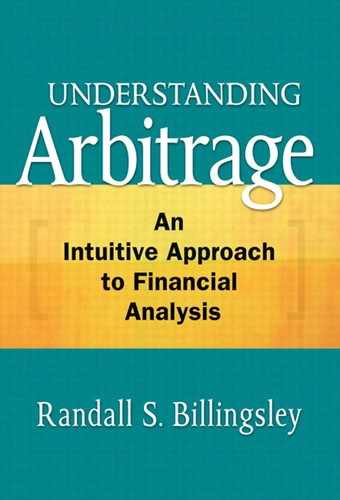Contents
Chapter 1. Arbitrage, Hedging, and the Law of One Price
Why Is Arbitrage So Important?
The Nature and Significance of Arbitrage
Hedging and Risk Reduction: The Tool of Arbitrage
Mispricing, Convergence, and Arbitrage
Identifying Arbitrage Opportunities
Chapter 2. Arbitrage in Action
Simple Arbitrage of a Mispriced Commodity: Gold in New York City Versus Gold in Hong Kong
Exploiting Mispriced Equivalent Combinations of Assets
Arbitrage in the Context of the Capital Asset Pricing Model
Arbitrage Pricing Theory Perspective
Chapter 3. Cost of Carry Pricing
The Cost of Carry Model: Forward Versus Spot Prices
Cost of Carry and Interest Rate Arbitrage
Chapter 4. International Arbitrage
Interest Rates and Exchange Rates
Chapter 5. Put-Call Parity and Arbitrage
The Put-Call Parity Relationship
Why Should Put-Call Parity Hold?
Using Put-Call Parity to Create Synthetic Securities
Using Put-Call Parity to Understand Basic Option/Stock Strategies
Basics of the Binomial Option Pricing Approach
One-Period Binomial Option Pricing Model
Two-Period Binomial Option Pricing Model
The Black-Scholes-Merton Option Pricing Model
Chapter 7. Arbitrage and the (Ir)Relevance of Capital Structure
The Essence of the Theory of Capital Structure Valuation
Measuring the Effect of Financial Leverage
Arbitrage and the Irrelevance of Capital Structure
Options, Put-Call Parity, and Valuing the Firm
